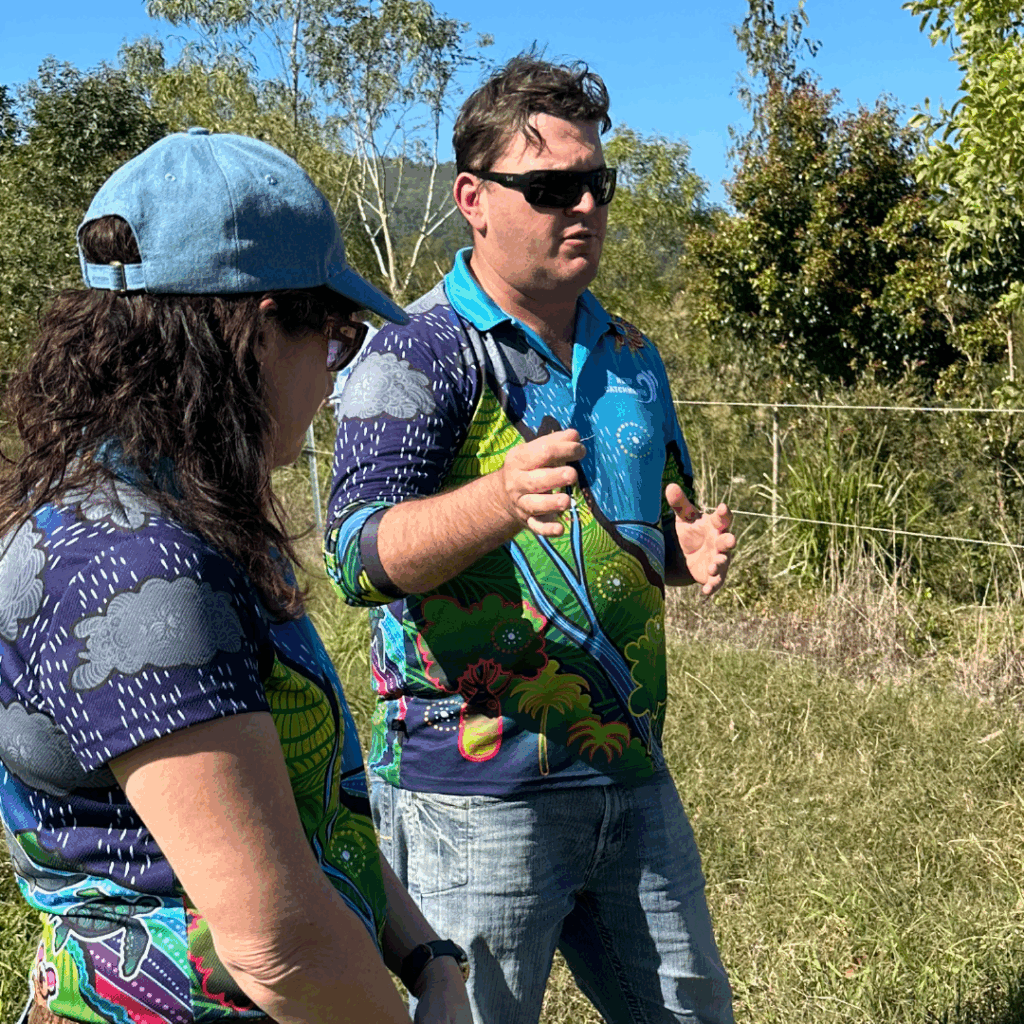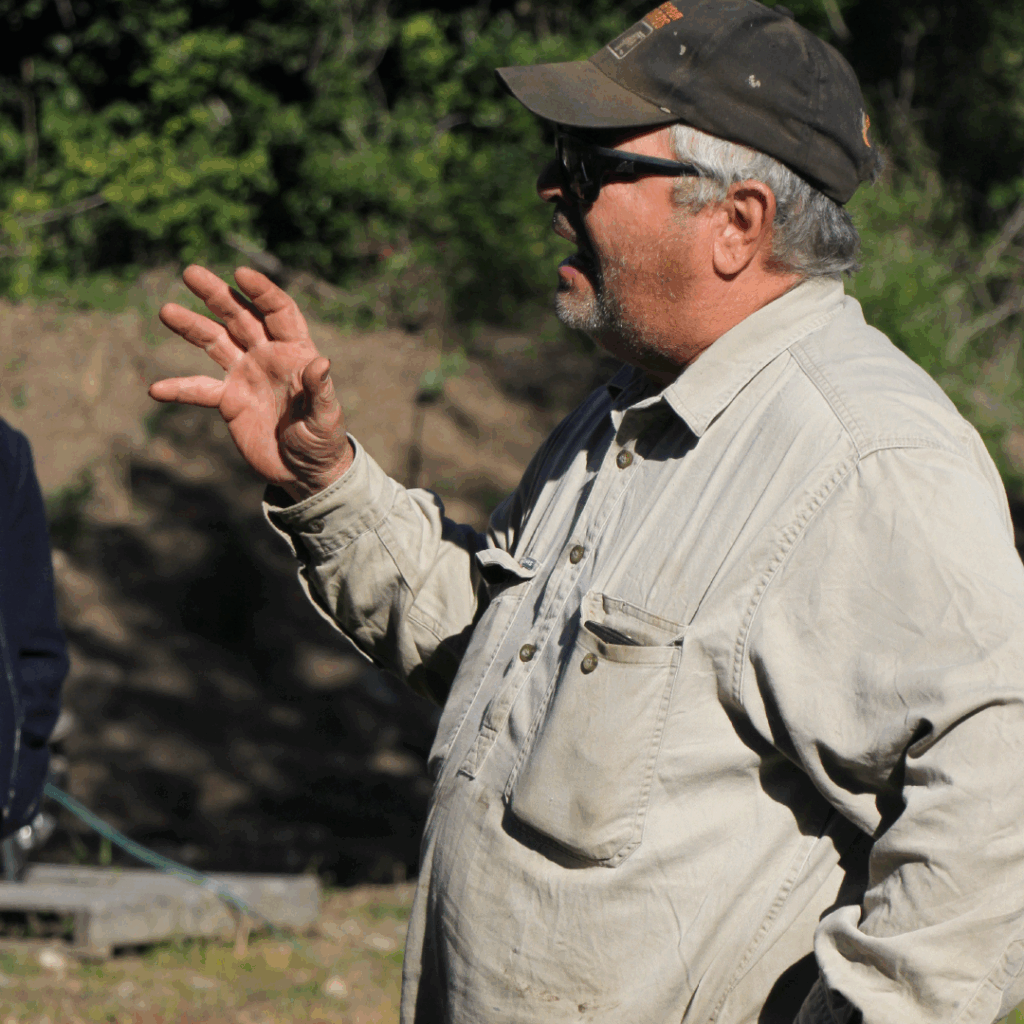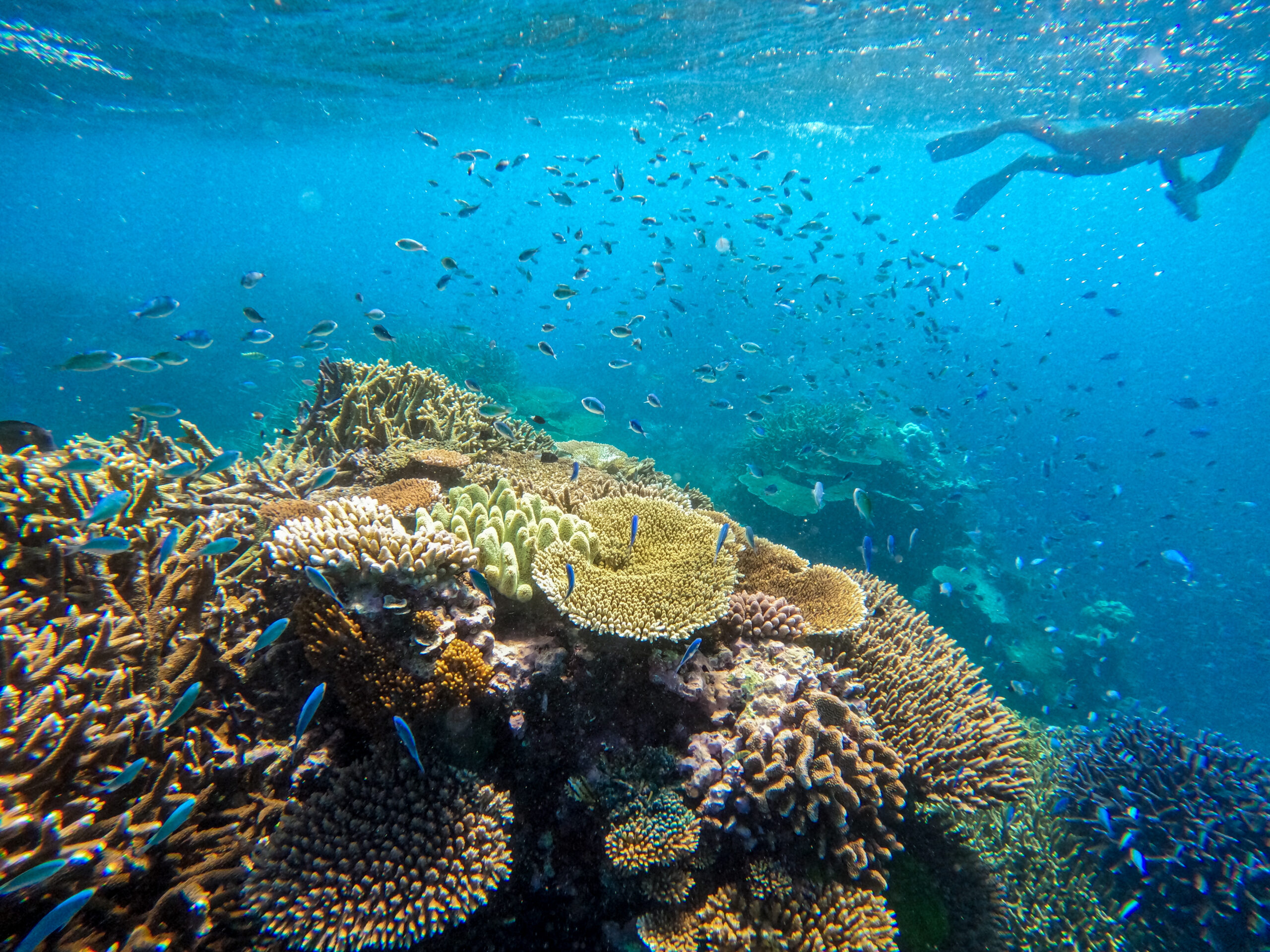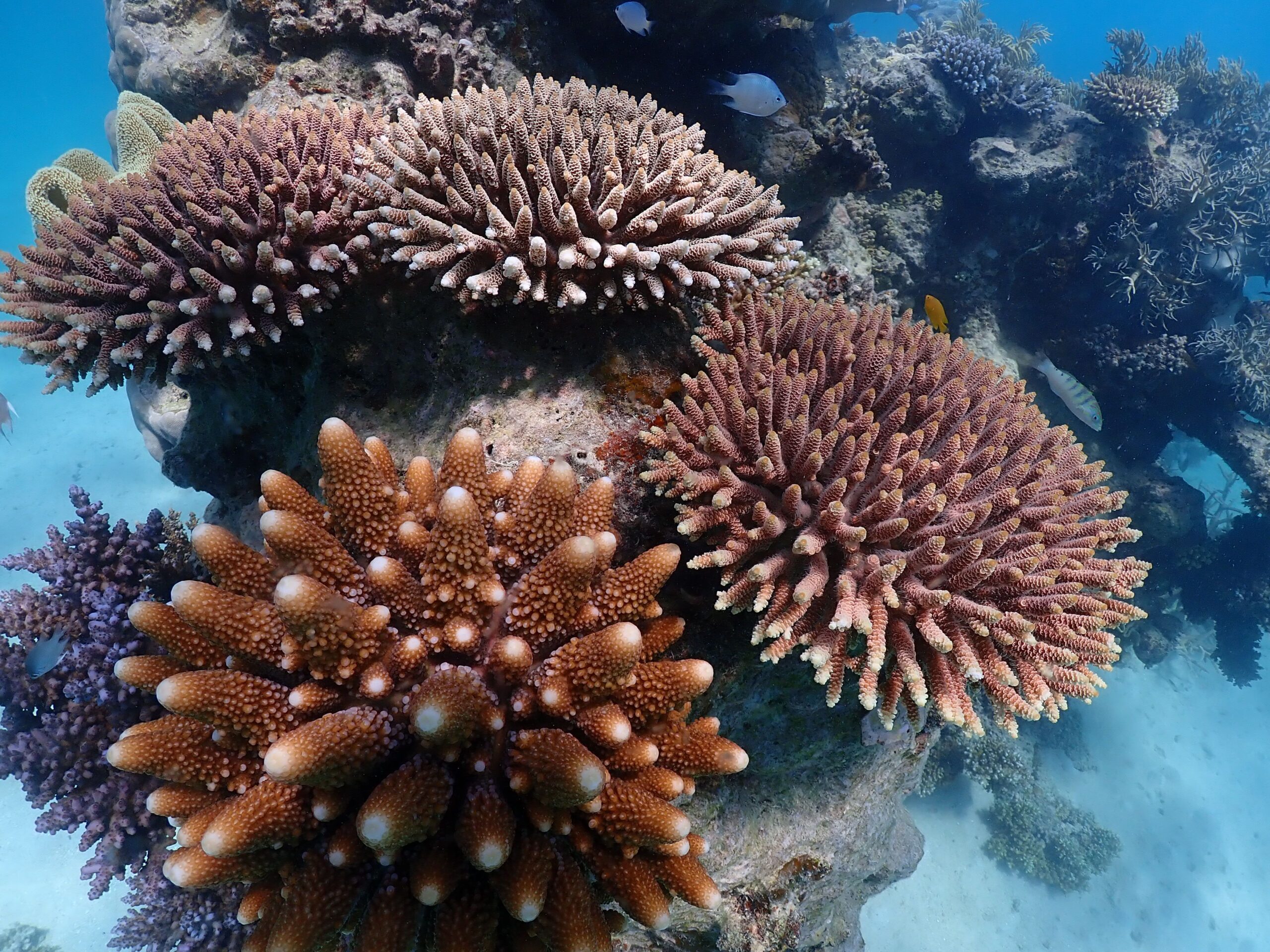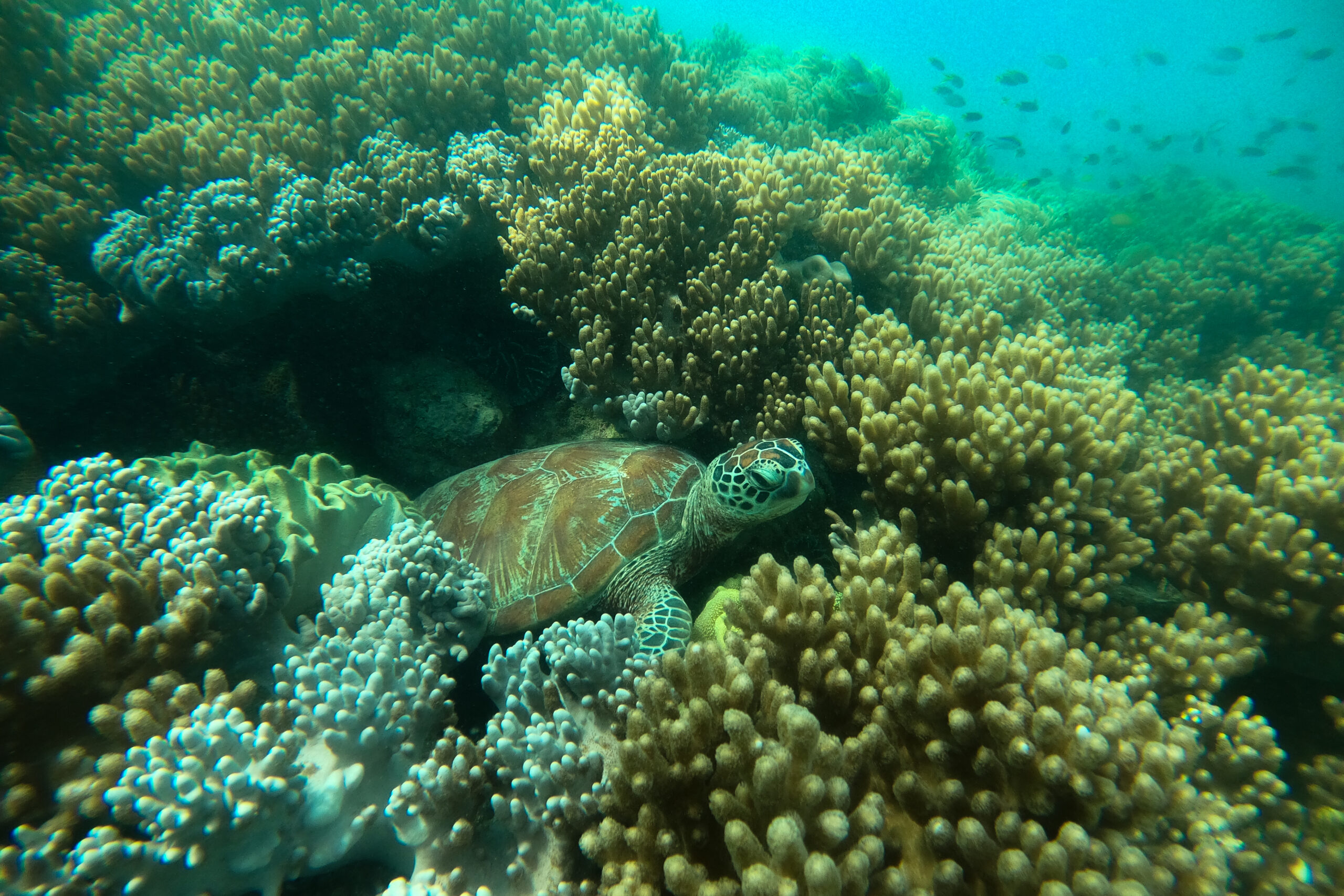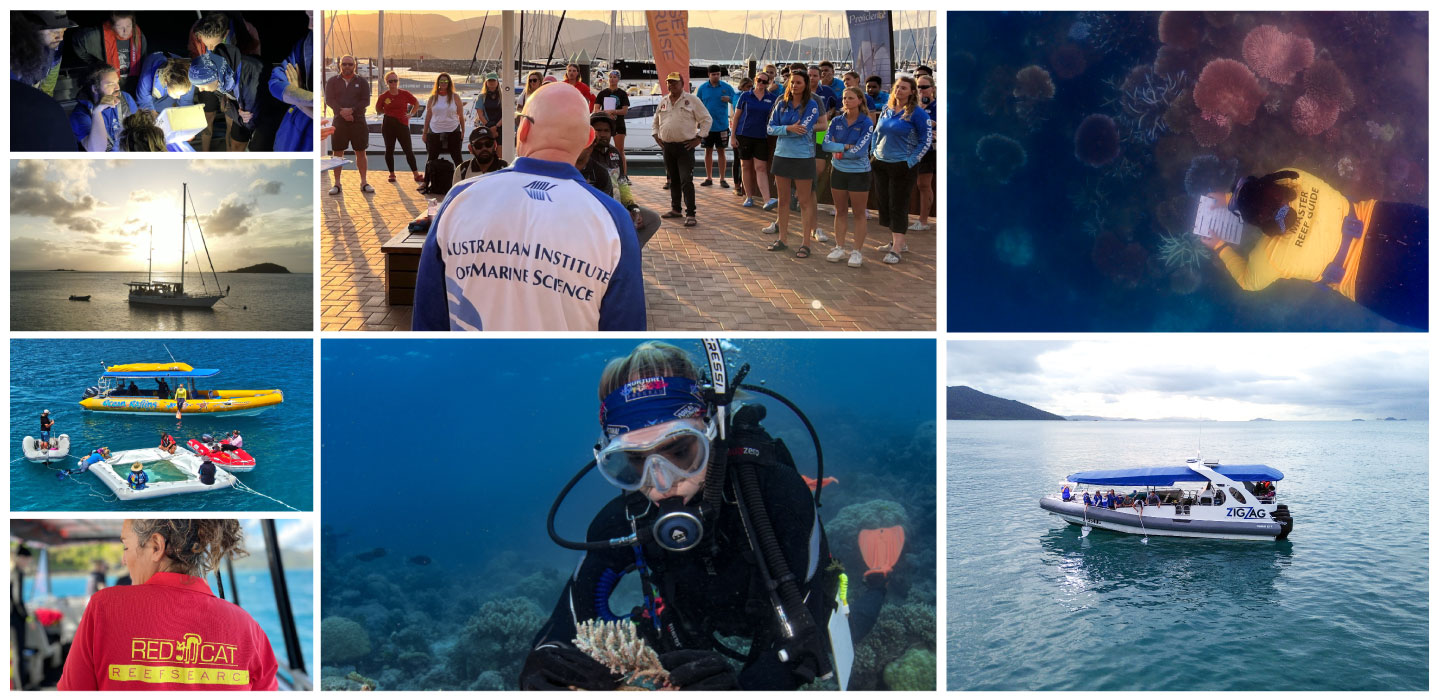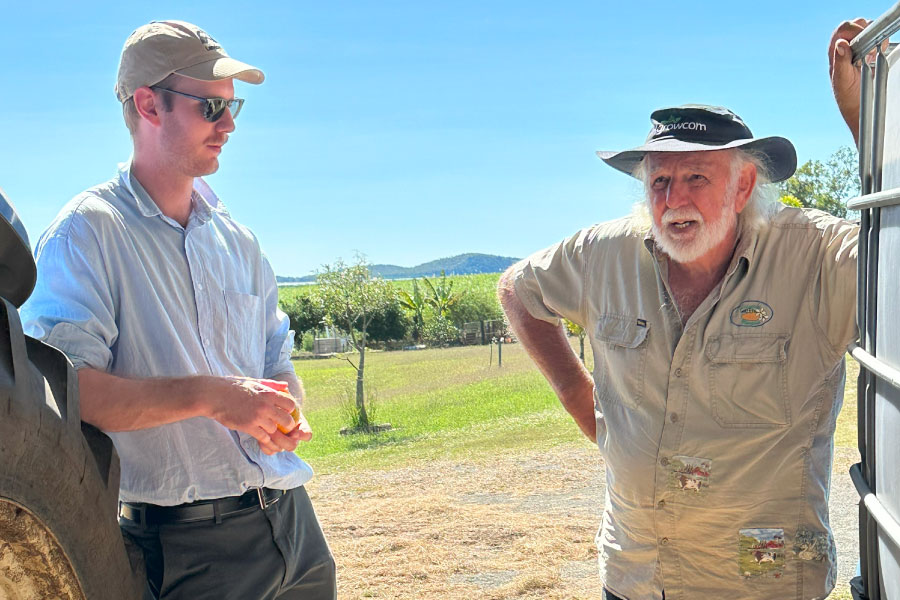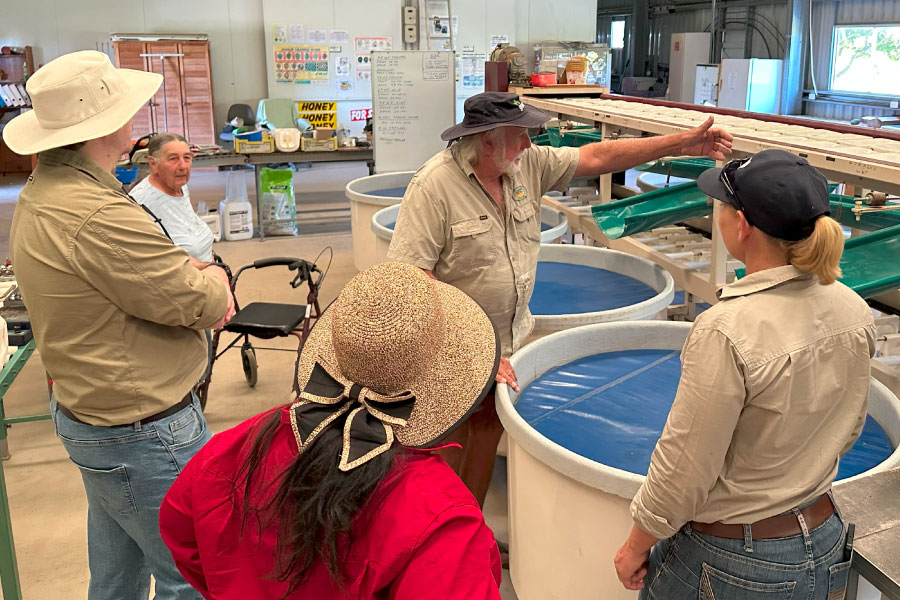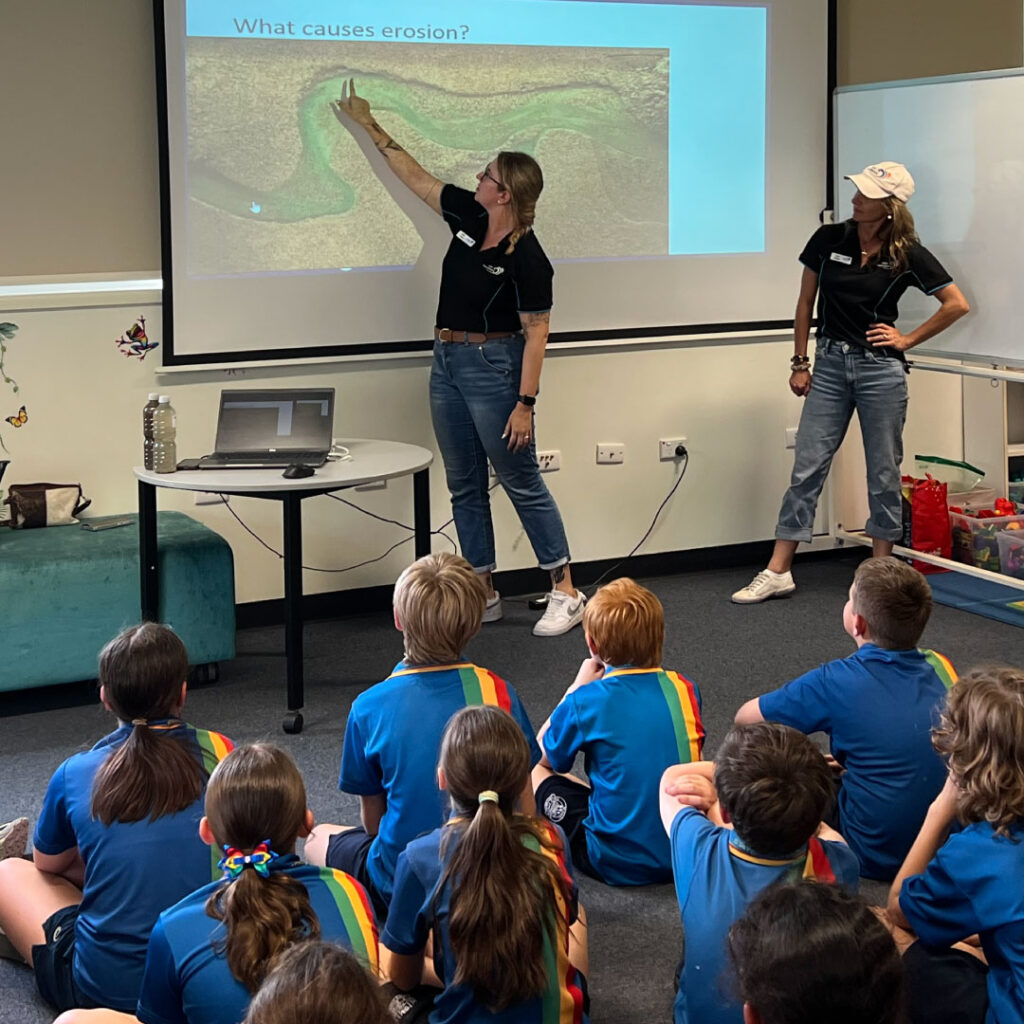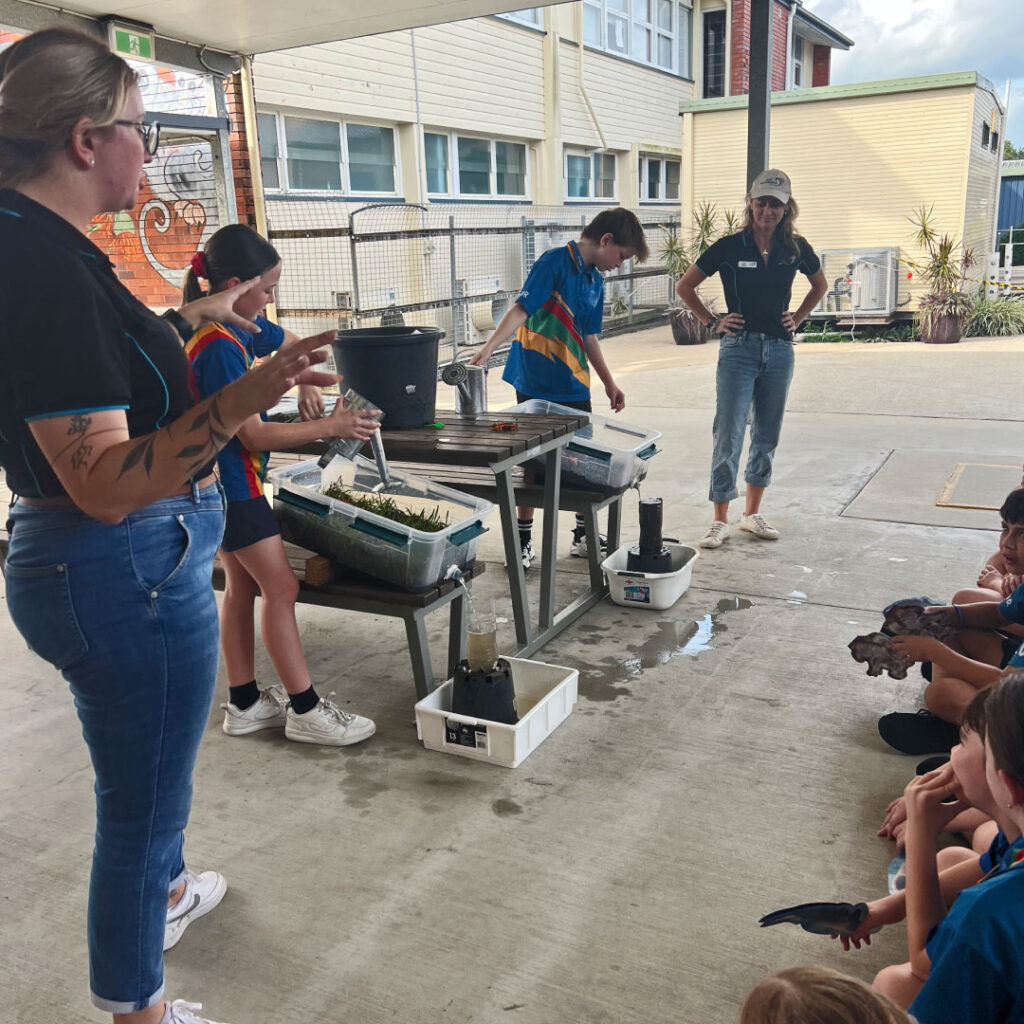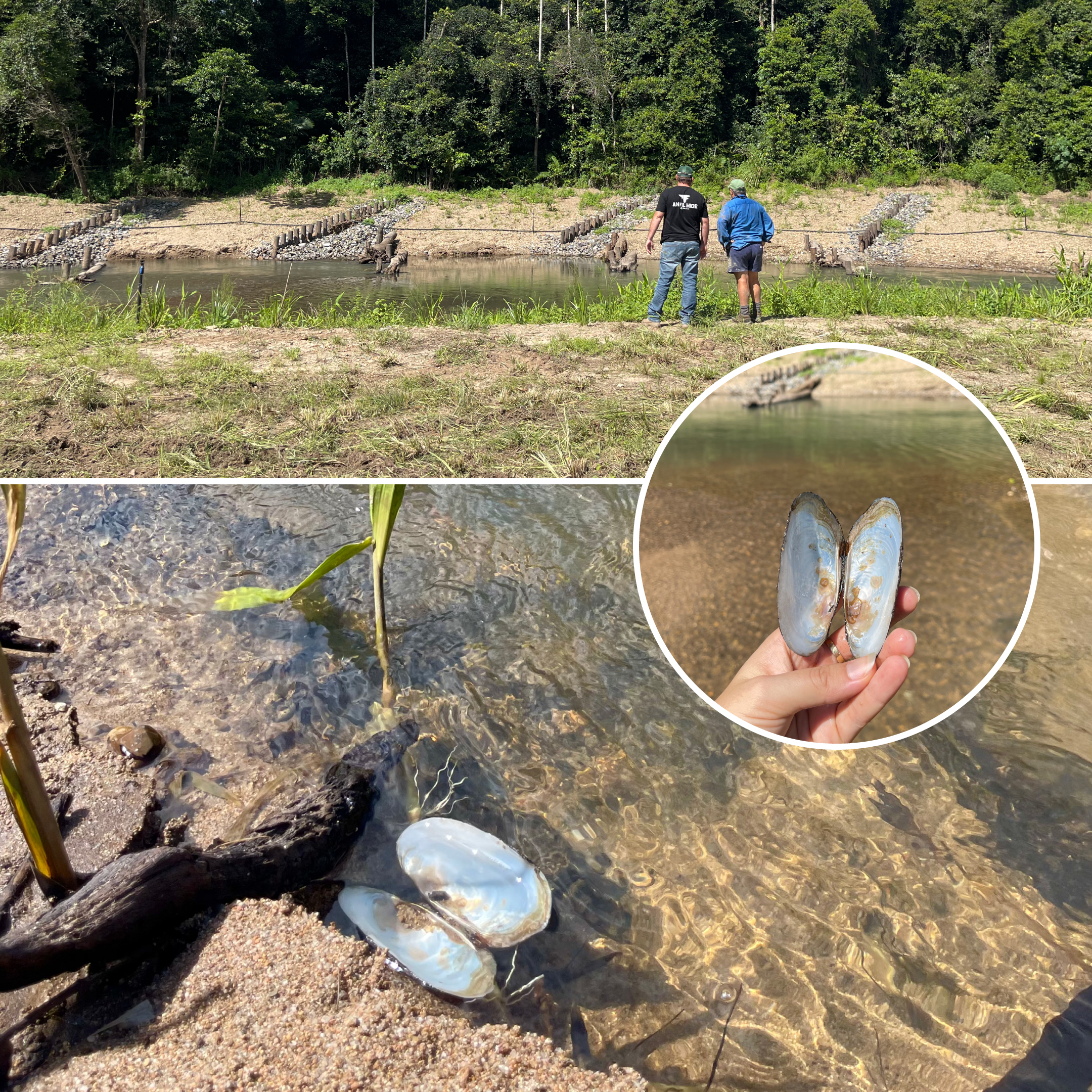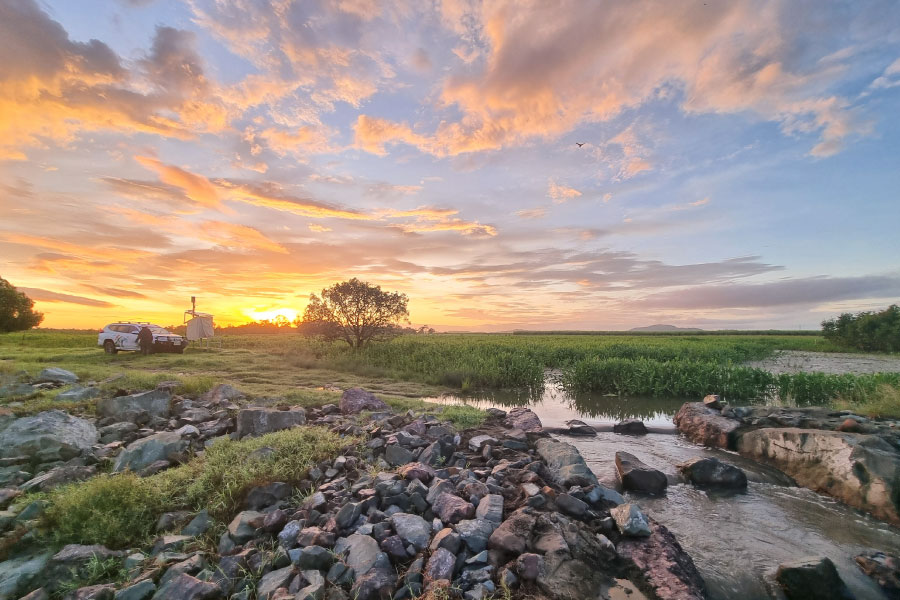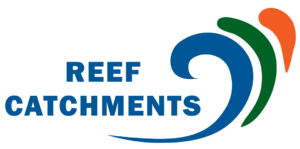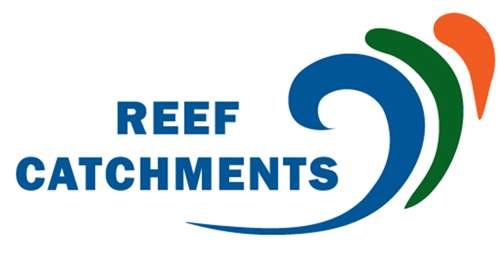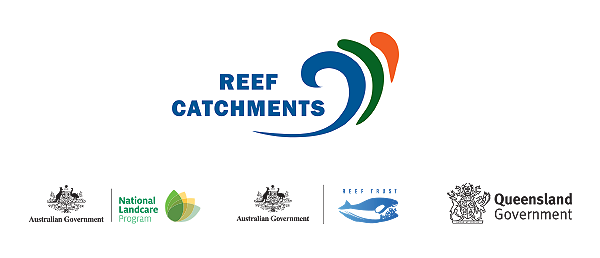On-Ground Restoration Showcased During Reef 2050 Advisory Committee Visit
Reef Catchments recently welcomed members of the Reef 2050 Advisory Committee (RAC) to Murray Creek, providing a first-hand look at the on-ground efforts driving water quality improvements for the Great Barrier Reef.
The RAC, which plays an advisory role in guiding strategic action under the Reef 2050 Plan, visited the Mackay region to gain insights into the practical challenges, successes, and partnerships behind natural resource management (NRM) projects.
Partnerships Creating Lasting Change
The tour highlighted a 7 km stretch of Murray Creek, where landholder Peter Barreta has worked with Reef Catchments over many years to stabilise eroding streambanks and restore riparian health. Peter shared how severe erosion once threatened valuable sections of the property and how the restoration journey has transformed both the landscape and his connection with it. His work has caught the attention of neighbouring landholders who have shown interest in the work being carried out.
Smart Design, Better Outcomes
Reef Catchments Project Manager Brendan Smith explained the engineering and ecological strategies behind the works. At one site, a steep eroded bank close to a pocket of valuable palms was stabilised by building the bank forward with river material and supported through pile fields, root balls and rock rather than cutting further into a valuable pocket of vegetation. Other locations on the property showcased the evolution of project techniques, from a gully planted just 12 months ago with tube stock now reaching shoulder height, to older works where long-term monitoring has led to improved, more durable solutions. “Each site has its unique challenges, so we work closely with our engineering partners and install contractors to ensure the work we end up delivering to prevent erosion is fit for purpose. By being adaptive and delivering a collaborative soliton we give our sites the best chance of success”
Strong Local Partnerships
Also attending on the day was Glenn Croxford of Strathdickie Plant Hire, a long-time partner of Reef Catchments. Glenn spoke of his personal commitment to each site, highlighting how attention to detail and a strong sense of ownership contribute to the success of these projects. This large-scale reach remediation approach is made possible through ongoing collaboration between Reef Catchments, multiple funding sources, landholder Peter Barreta, and local contractors including GM Grader Hire, Strathdickie Plant Hire, and Jeppesen Farming Co.
Emma Jones, Principal Project Officer, highlighted how ongoing collaboration between landholders, contractors, and Reef Catchments ensures effective and lasting restoration outcomes. “Maintaining long term strong relationships with our contractors and landholders is critical for site success. If our landholders and contractors have bought into the outcomes of the project they go above and beyond to ensure successful site delivery.”
Why It Matters
Streambank erosion is a significant source of sediment entering reef catchments, impacting both land productivity and downstream water quality. Projects like this one at Murray Creek demonstrate the long-term value of early planning, consistent investment, and meaningful partnerships. By restoring riparian vegetation, stabilising banks, and protecting key ecological areas, we not only reduce sediment runoff but also enhance habitat, increase biodiversity, and support more resilient farming systems. These are the kinds of collaborative, evidence-based efforts that contribute directly to the Reef 2050 vision of a healthy Reef and a sustainable future.

Project Details
This work has been delivered through several key projects over recent years. Initial stages were supported by the Reef Trust 4 Program (funded by the Australian Government’s Reef Trust), with major works commencing in 2020 including streambank stabilisation, revegetation, and 3.4 km of riparian fencing. In 2024, further improvements were delivered through the Streambank Remediation Program – O’Connell Sites Project (funded through the Queensland Government’s Queensland Reef Water Quality Program and the Australian Government’s Reef Trust), focusing on engineered works to protect high-value remnant vegetation. Most recently, ongoing efforts are continuing under the MWI Landscape Repair Program (also funded by the Australian Government’s Reef Trust), with additional fencing, weed control, and revegetation planned into the 2025–2026 financial year.
At this property alone, over 7km of streambank has been stabilised and restored through strategic riparian fencing, revegetation, and erosion control, made possible through several completed and ongoing projects.including the Australian Governments Reef Trust 4 Program, the Queensland Government’s Queensland Streambank Remediation Program – O’Connell Sites project, the Preparing Australian Communities – Nature Based Solutions to Build Regional Resilience project and the Australian Government Reef Trust Mackay Whitsunday Isaac Landscape Repair Program. With ongoing collaboration between Reef Catchments, multiple funding sources, landholder Peter Baretta, and local contractors GM Grader Hire, Strathdickie Plant Hire and Jeppesen Farming Co., this large-scale reach remediation approach is possible.”
